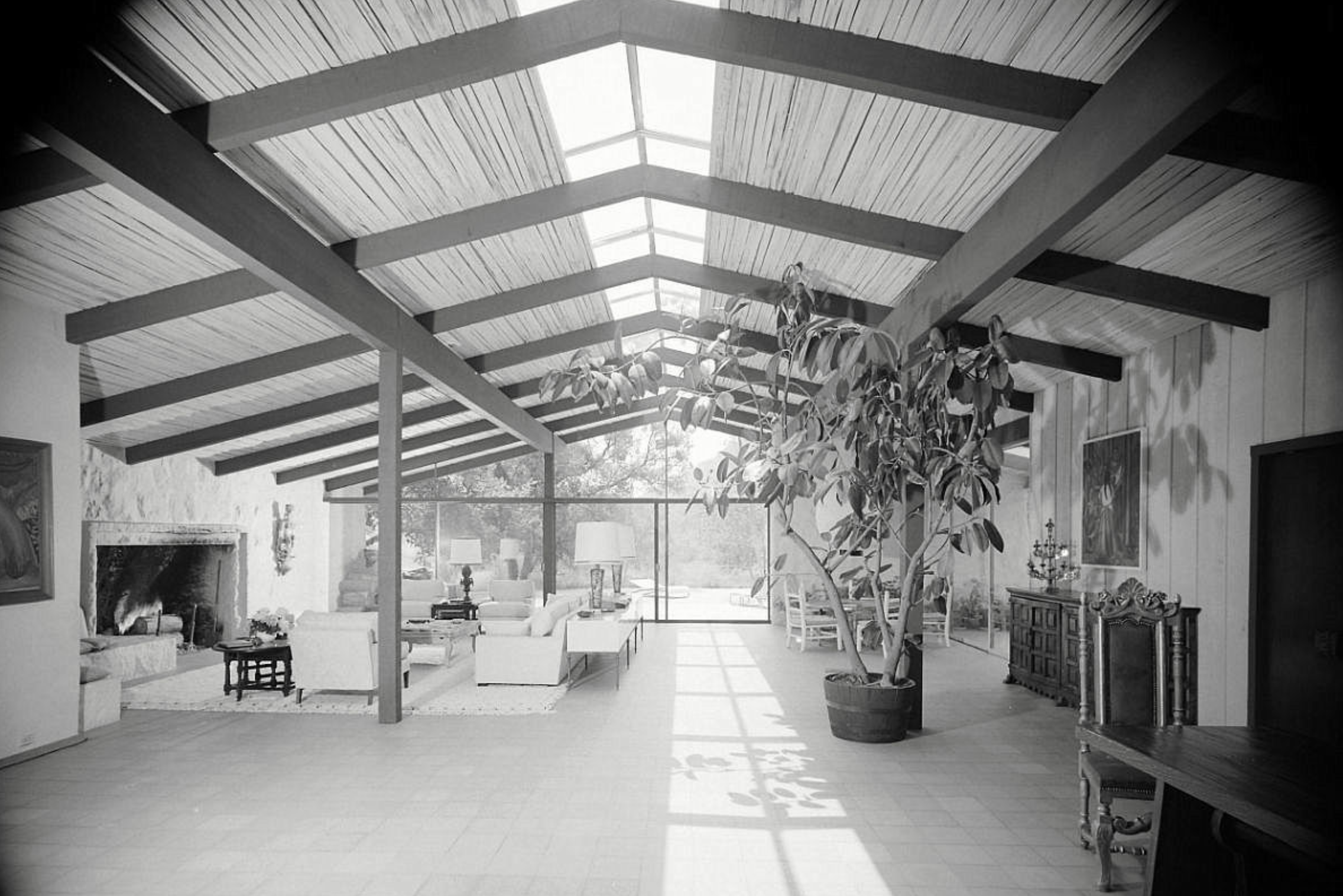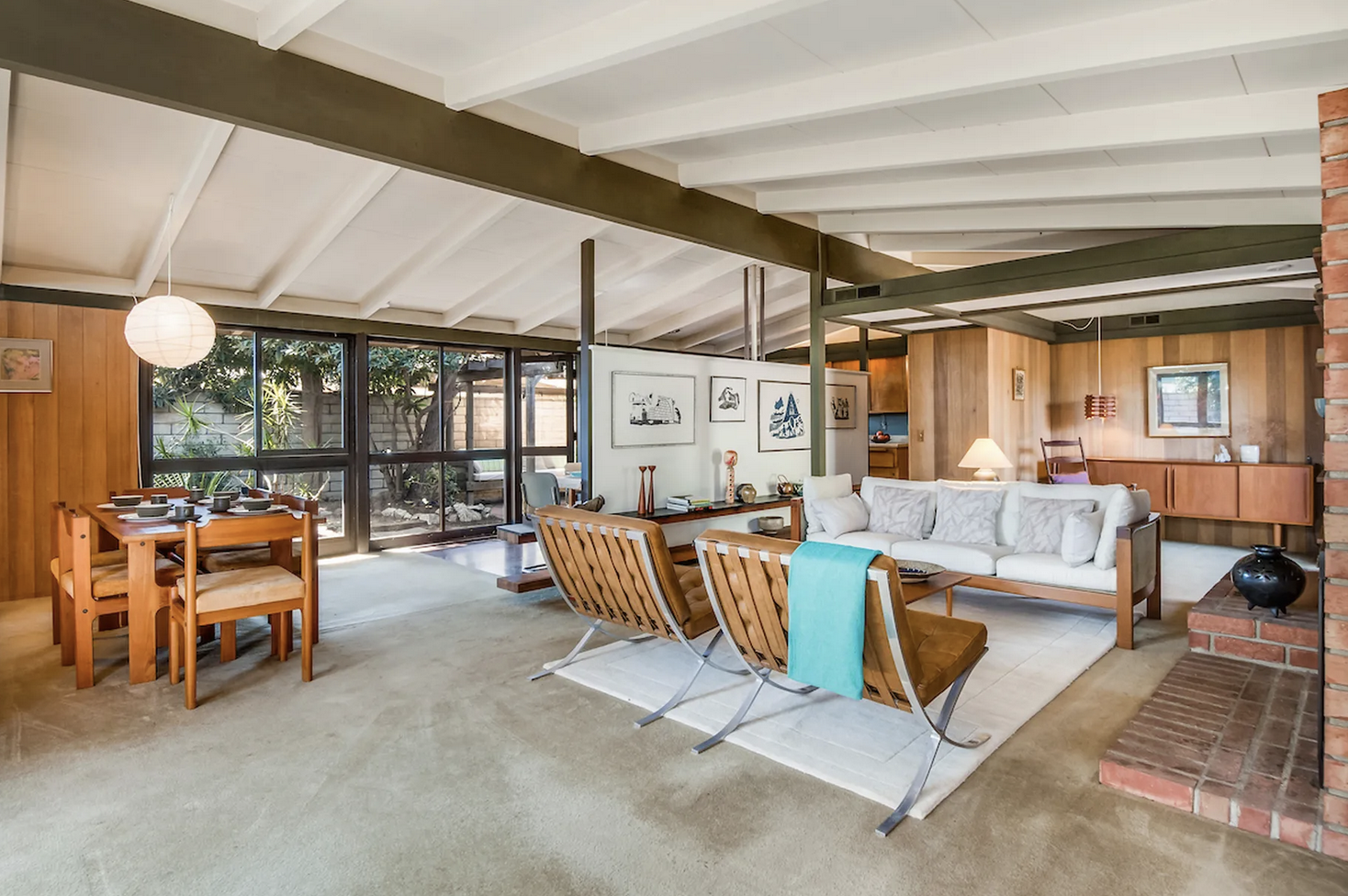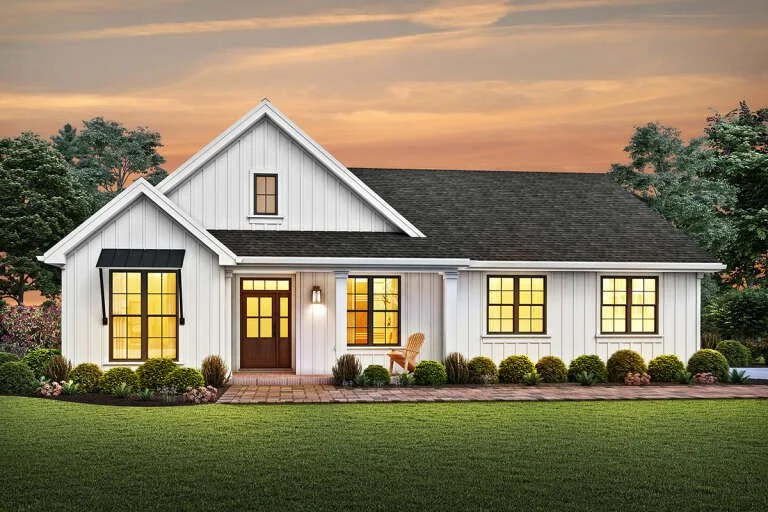The Rise of the Rambler
The Ranch house, also known as the rambler, emerged in Southern California in the early 1930s, pioneered by Cliff May, a self‑taught designer from San Diego. In 1932, May envisioned a “California Ranch house,” drawing inspiration from the low‑slung Spanish Colonial ranchos and haciendas—but with a much more informal, open‑plan layout suited to modern suburban life. May’s designs combined Prairie-style influence (think Frank Lloyd Wright’s horizontal lines) with Spanish aesthetic details, yet prioritized simplicity, cross-ventilation, and connection to the outdoors.
Throughout the 1930s, May developed prototypes like the O’Leary House (1932), Lindstrom (1933), and Whalen and Tucker Houses (mid‑’30s), primarily built around San Diego and Los Angeles.
By the mid‑’40s, he began influencing suburban tract development. After WWII, ranch homes soared in popularity—largely due to returning veterans seeking affordable, modern housing. In the 1950s, Leavittown-style suburbs and May’s prefabricated tract ranches (e.g. Lakewood Rancho Estates in Long Beach, over 700 homes built in 1953–54) helped cement the style nationwide.
These single‑story ramblers commonly had L‑ or U‑shaped plans, low-pitched rooflines, wide eaves, attached garages, and expansive windows or sliding glass doors for seamless indoor–outdoor living. Interior layouts favored open floor plans—kitchens flowed into dining and living spaces—and house sizes grew from roughly 1,100 sq ft in 1950 to 1,350 sq ft by 1959, reflecting family-centered flexibility.
Beyond May, developers like William Levitt heavily promoted the ranch in Levittown suburbs, while modernists such as Joseph Eichler adapted the style in California with glass walls, vaulted ceilings, and mid-century modern detailing.
Today, the rambler remains popular across the U.S. Examples include renovated 1950s ramblers in Charlotte, North Carolina, where homeowners are refreshing solid, mid‑century brick ranches with modern finishes and maintaining their livable one‑floor layouts. The style’s enduring appeal rests in its accessibility, adaptability, and unpretentious charm—modern builders and renovators continue blending ranch pride with modern materials and contemporary sensibility. (below)




